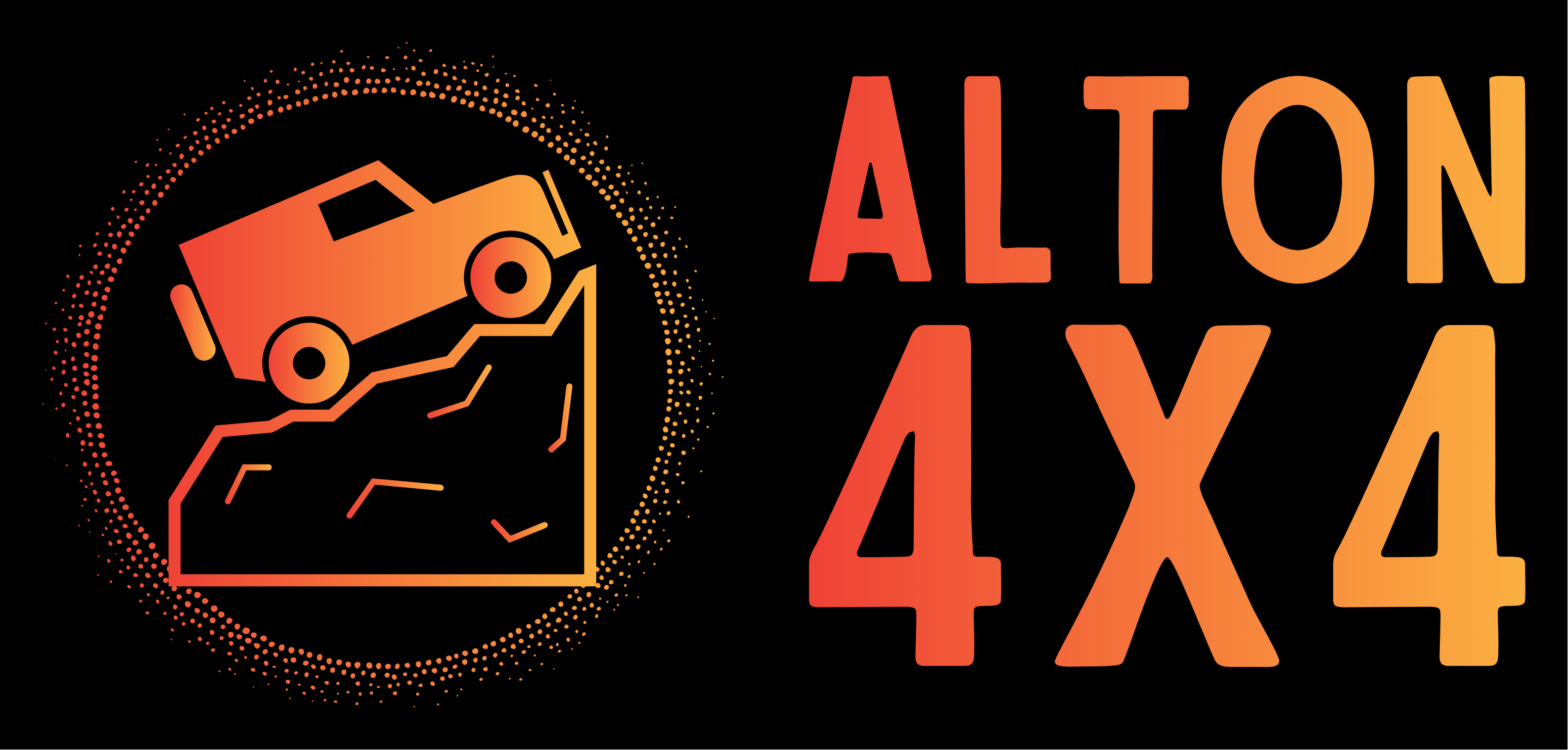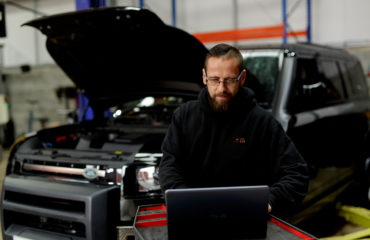As part of a rebuild project on this Land Rover G4 TD5 we replaced the chassis with a new galvanised frame. The original chassis for the Discovery 2 has a weakness to rot near the rear fuel tank and rear axle mounts. Being the load-bearing framework to mount the tyres, axle assemblies, gear box, steering system, brakes, and the weight of the engine, the chassis must be durable to withstand strong forces and corrosion. The galvanised framework of the replacement chassis offers strength and helps to provide long term corrosion protection. An average galvanised coating has a thickness of 85 microns and can protect a steel structure for up to 100 years – longer than most vehicles life spans!
The chassis number (or VIN) is usually printed on the driver side door and helps to identify the vehicle. If you are using your 4×4 on public highways it is a legal requirement to have a VIN (Vehicle Identity Number) – you are permitted to use the old chassis number and transfer it over to the new chassis if it is a like for like replacement, however you can’t replace a leaf spring chassis with a coil spring and keep the same VIN. The VIN is an unique 17-digit number which identifies your vehicle from other makes and models. If you do replace the chassis for a different type, the DVLA will allocate a replacement VIN.
The DVLA state the following:
Keep a vehicle’s original registration number
A rebuilt vehicle can keep its original registration number if you can prove you’ve used:
- the original unmodified chassis or bodyshell (car or light van)
- a new chassis or monocoque bodyshell of the same specification as the original (car or light van)
- the original unmodified frame (motorbike)
- a new frame of the same specification as the original (motorbike)
You must also have 2 other major components from the original vehicle from the following lists.
For cars or light vans:
- suspension (front and back)
- steering assembly
- axles (both)
- transmission
- engine
Types of chassis
There are four main types of chassis, which are used in different types of vehicles:
Ladder Frame Chassis
The construction of the ladder chassis is simple to assemble and creates a strong framework. The ladder chassis is commonly used in 4×4’s due to the weight and strength making it suitable for towing heavy loads. It’s rigidity and weight makes cornering challenging so is not best suited to sports cars.
Backbone Chassis
The backbone chassis construction covers the driveshaft helping to protect it from damage when off-roading and has better torsional rigidity than the ladder chassis allowing for more twist.
Monocoque Chassis
The single shell monocoque chassis design combines the shell and chassis as the frame and provides a cage like construction. The monocoque chassis provides good torsional rigidity and is easy to mass produce
Tubular chassis
Tubular chassis are mainly used on race cars to provide greater safety with increased rigidity in in relation to weight. Tubular chassis are not usually used in passenger cars as they are expensive to make and cannot be mass produced cost effectively.
4×4 Chassis
The ‘ladder frame’ was traditionally favoured in 4×4 production as the design isolated the stresses of flexing and movement to the chassis, allowing the body to remain unaffected. However modern 4×4 manufacturing has moved to the monocoque chassis to reduce the overall weight of the vehicle to meet emission regulations.

